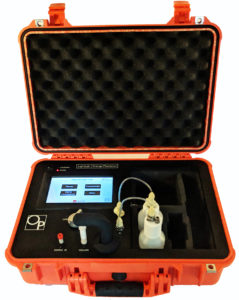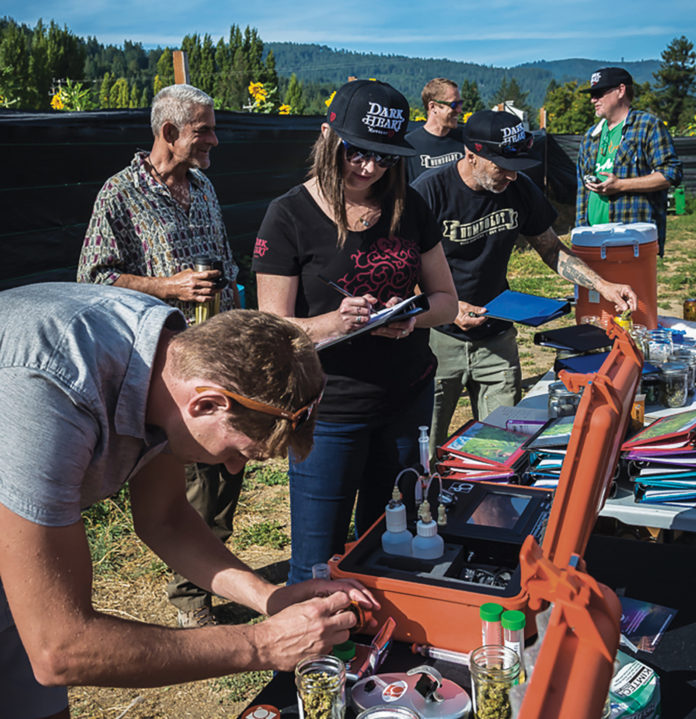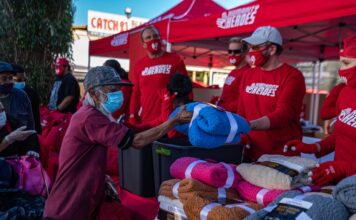It seemed the entire hemp industry was at the NoCo Hemp Expo in Denver at the end of March. Wholesalers, processors, cultivators, politicians, and ancillary businesses were there en masse. It also seemed like the word on everyone’s lips was “testing.”
The ratification of the 2018 Farm Bill on December 20, 2018, descheduled hemp—otherwise known as Cannabis sativa cultivars that contain no more than 0.3 percent THC. Now, federal and state agencies are determining how they will oversee a massive new marketplace as legislators maneuver to harness the economic potential for their constituents.
At such low levels of THC, testing is the preeminent issue for all plant-touching entities and those commissioned to monitor them. After all, both hemp and marijuana are Cannabis sativa. The differentiating quality is the amount of tetrahydrocannabinol (THC) content in the plant or product. Here’s the challenge: The absence, presence, or quantity of THC cannot be determined by sight or smell. In most locales, when Cannabis sativa has more than 0.3 percent THC it crosses into the heavily regulated, and scheduled, category of “marihuana” as defined by the Controlled Substances Act. Therefore, the plant is illegal to grow, process, or transport without proper state-level licensing. (Even with state licensing, transporting cannabis with a THC level higher than 0.3 across state lines is a federal felony.)
While some states have been bold hemp industry pioneers with successful cultivation pilot programs predating the farm bill, most states rapidly are trying to develop and deploy a regulatory infrastructure so they don’t lose crucial competitive advantage in the newest cannabis race. Meanwhile, the federal government is hosting listening sessions and establishing rollout timelines as it develops regulation.
The absence, presence,
or quantity of THC
cannot be determined
by sight or smell.
Testing, testing, and more testing
With so much at stake, the ability to quantify THC against certificates of analysis (COA) rapidly, on the go, in volume, on the roadside, and throughout the chain of custody from farm to retail shelf is critical.
It must be noted not all THC is created equal. THCA, the acid form of THC, naturally occurs in cannabis plants and is non-psychoactive. Delta-9 THC, the psychoactive, non-acidic form of THC, does not naturally occur in the plant and presents only after THCA has been exposed to heat. THCA converts to Delta-9 THC at a rate of 0.877.
With that context in mind, here are a few ways hemp industry participants interface with the burden and opportunities cannabinoid testing presents.
Lab testing: State-level legislation and compliance-auditing policies vary widely but all will require testing in some capacity. Some states, such as Colorado, use gas chromatography (GC) to analyze the top few inches (two to six inches, depending on the state) of a live cannabis plant to ensure compliance. Other states use high-performance liquid chromatography (HPLC), which can measure both acid and non-acid forms of THC. Both types of technology are laboratory-based and require a chemist to operate.

Portable field test: LightLab by Orange Photonics is a portable cannabinoid analyzer that uses liquid chromatography to quantify THCA and Delta-9 THC. LightLab caters to non-chemist users, guiding the operator through a quick sample-prep process to analyze THC content at the analyzer.
Sampling: Perhaps the most challenging component of testing, selecting a representative sample is the foundation of good data. When tracking plants that could encroach on 0.3-percent THC, processing, or buying biomass, it is important to define how sampling is conducted. For example, collecting multiple samples from the top, middle, and bottom of a bag of biomass, across the truck load, could be used to establish variation and an average cannabinoid content across the lot.
Buying trim/biomass: Portable testing is a great way to verify a presented material and the material referenced on the COA correspond to a reasonable degree. As always, it’s important to consider the samples selected, homogenized, and analyzed and how those samples relate to the overall batch.
Quality control: Maintaining a compliant level of THC is only part of the story. By the time a product is on a retailer’s shelf, it often has been on a long journey. Extracting cannabinoids from hemp, and doing so completely, requires thoughtful planning and attention to in-process quality control. Cannabinoid content verification may take place at up to a dozen points along the way. Onsite cannabinoid testing can be useful for monitoring cannabinoid content during cultivar selection and maturation studies of young and mature plants in-field or in the greenhouse. Testing also is useful in biomass supply chain management and in evaluating pre-extraction raw materials, in-process materials, and certainly the extract itself. If the extract then is further processed or infused into a lotion, for example, additional verification of the cannabinoid dosage and distribution of cannabinoids throughout the product is critical.
Consumer trust is paramount: Ultimately, the hemp industry needs to build trust with consumers. Hemp-derived wellness products eventually will be subject to best manufacturing processes, accurate labeling, and consistent quality—all of which hinge upon testing.
Compliance: Law enforcement has the unenviable task of enforcing regulatory compliance when it comes to interstate commerce of hemp and non-compliant plants and products.
At low levels of THC, testing is the preeminent issue for all plant-touching entities.
Support your regulators
Hemp businesses are in a unique position following passage of the 2018 Farm Bill. Federal, state, and local regulators are building laws and enforcement processes to which industry participants will be held accountable. The vast majority of those building the infrastructure strongly desire feedback from stakeholders with knowledge and experience. “We don’t know what we don’t know but we know we are missing things,” one Midwestern regulator commented on NoCo’s expo floor. Incredibly, many states are moving forward with the 2019 planting season in advance of testing and establishment of regulatory oversight. So, the window of influence is now. Get involved, contact your local state representative, support your local and state police, get in touch with your county’s USDA chapter, and tell your story.
Stephanie McArdle is the co-founder and president of Orange Photonics, a portable analytical instrumentation company serving the needs of the hemp and cannabis industries. She previously served on the board of a large independent business association and as director of an integrated health-care system. She holds a master’s degree in international relations from Dublin City University in Ireland and a bachelor’s degree in economics from the Whittemore School of Business and Economics.



